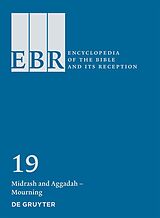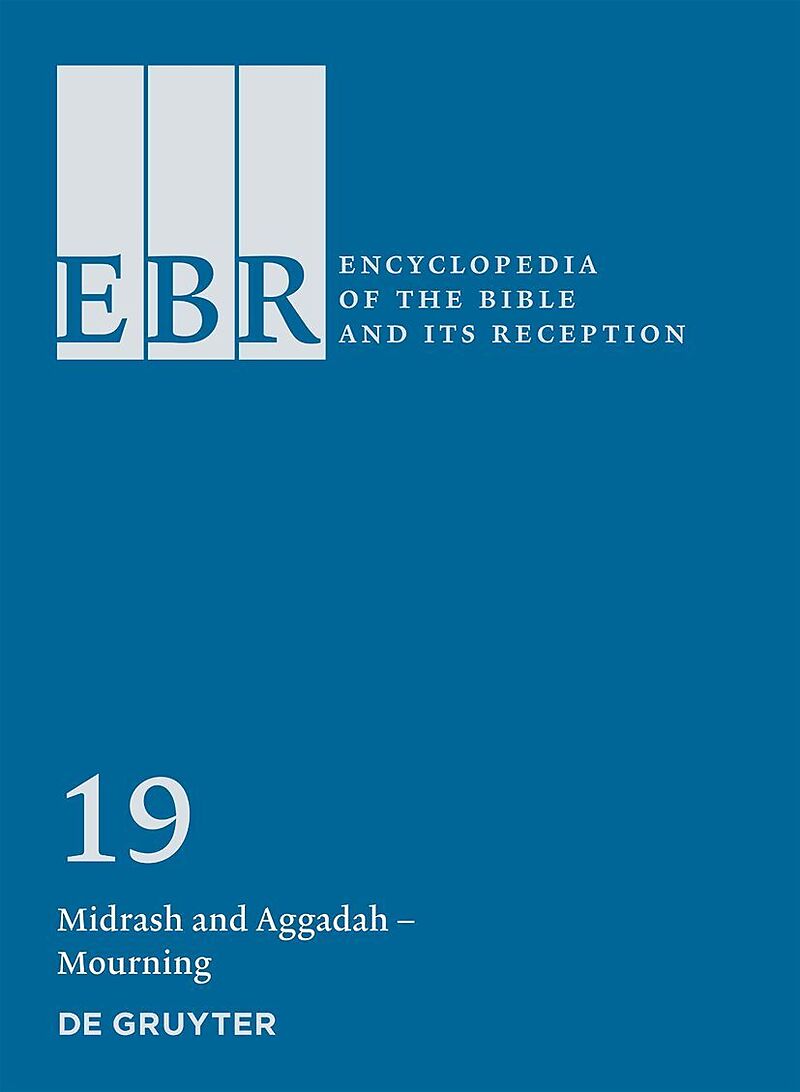Midrash and Aggadah - Mourning
Einband:
Fester Einband
EAN:
9783110313369
Untertitel:
Encyclopedia of the Bible and Its Reception (EBR) 19
Genre:
Religion & Theologie
Herausgeber:
De Gruyter
Anzahl Seiten:
686
Erscheinungsdatum:
2021
ISBN:
978-3-11-031336-9
The projected thirty-volume Encyclopedia of the Bible and Its Reception (EBR) is intended to serve as a comprehensive guide to the current state of knowledge on the background, origins, and development of the canonical texts of the Bible as they were accepted in Judaism and Christianity. Unprecedented in breadth and scope, this encyclopedia also documents the history of the Bible's interpretation and reception across the centuries, not only in Judaism and Christianity, but also in literature, visual art, music, film, and dance, as well as in Islam and other religious traditions and new religious movements. The EBR is also available online. Blogger's Choice Articles recommended by biblioblogger Jim West (https://zwingliusredivivus.wordpress.com): Christof Berns (Hamburg, Germany) Miletus . Berns examines and describes the archaeology of the city, from its earliest days through the 14th century. He offers readers a precis of the relevant facts and includes a brief, but current bibliography for those interested in further details. Younghwa Kim (Decatur, GA, USA) Millennium, Millennialism III. Christianity D. East Asia and Africa . The fascinating way in which Christian millennialism was received in East Asia and Africa is described in Kim's contribution within the larger discussion of the 'Millennium.' He remarks, for example, "In the mid-19th century Qing dynasty, Hong Xiuquan's anticipation of the millennial kingdom influenced the Taiping Rebellion, a religious and political movement seeking to reform Chinese society." Throughout the article, he shows how Millennialism is not merely an intellectual enterprise of end-time speculation, but a real world danger. Hervé Gonzalez (Lausanne, Switzerland) Miscarriage I. Ancient Near East and Hebrew Bible/Old Testament . In what can only be described as a fascinating essay on the problem of miscarriage in the Hebrew Bible and the Ancient Near East, we read "Despite a great number of stories about pregnancy and birth in the HB/OT (esp. in the book of Genesis), no narrative focuses on a miscarrying woman." The entire essay is learned and provocative. Judith R. Baskin (Eugene, OR, USA), Misogyny III. Judaism C. Medieval Judaism D. Modern Judaism . Worth quoting in full are the opening lines of Baskin's contribution: "Medieval Judaism expanded negative biblical and rabbinic views of women. These included constructing women as other and lesser than men, a tradition based on the rabbinic privileging of the origin narrative of male primacy in Gen 2:7, rather than the simultaneous creation of both males and females in Gen 1:2628 ( bKet 8a; BerR 17:4; Baskin 2002)." Her two-section contribution is exceptionally informative. Wolfgang Zwickel (Mainz, Germany) Moab, Moabite I. Ancient Near East and Hebrew Bible/Old Testament . Zwickel's essay focuses on Moab and the Moabites in the Hebrew Bible. Accordingly, he offers readers an overview of both the sources and the appearance of the terms within the literature of the Old Testament. He moves from particular texts to specific eras in a contribution that, to be fair, attempts to cover too much in too small a space due to the generic nature of an encyclopedic entry. It may have been better had this essay been divided into smaller sub-units covering the archaeological information and the textual information independently. Nonetheless, what's contained here is incredibly helpful and informative. Jacob Cerone (Munich, Germany) Moses III. New Testament . Here Cerone looks at the New Testament's treatment of Moses in terms of his biographical details, his acts as lawgiver, his role as prophet, other possible roles he played, and the typology to which the Moses stories are subjected and thereby transformed. He concludes "By connecting Jesus to Moses, the early Christians were able to maintain continuity with their Jewish roots while demonstrating that Jesus surpasses Moses in glory, honor, and authority." Sarah E. G. Fein (Waltham, MA, USA) Mother, Mothers, Motherhood VIII. Visual Arts . Fein finely delineates the idea of motherhood in the visual arts. Accordingly, she discusses Eve as she appears in artistic representations, as well as other mothers in the Hebrew Bible along with Mary from the New Testament. In this connection, she observes "The two mothers associated with the New Testament most popular in visual reception, especially Byzantine art, are Anne, the mother of Mary, and Mary, the mother of Jesus." Her very interesting and well documented essay is must reading, as is the entire entry on Mothers in which it appears.

Leider konnten wir für diesen Artikel keine Preise ermitteln ...
billigbuch.ch sucht jetzt für Sie die besten Angebote ...
Die aktuellen Verkaufspreise von 6 Onlineshops werden in Realtime abgefragt.
Sie können das gewünschte Produkt anschliessend direkt beim Anbieter Ihrer Wahl bestellen.
Loading...
Die aktuellen Verkaufspreise von 6 Onlineshops werden in Realtime abgefragt.
Sie können das gewünschte Produkt anschliessend direkt beim Anbieter Ihrer Wahl bestellen.
| # | Onlineshop | Preis CHF | Versand CHF | Total CHF | ||
|---|---|---|---|---|---|---|
| 1 | Seller | 0.00 | 0.00 | 0.00 |
